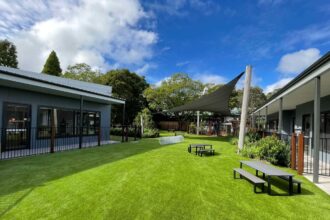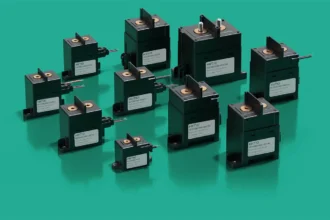In today’s fast-paced world, wellness isn’t a luxury, it’s a necessity. For many, creating a space at home dedicated to recovery, restoration, and physical health is no longer just a dream but a deliberate lifestyle upgrade. Whether you’re a weekend warrior nursing sore muscles or a remote worker prioritizing mental reset, a recovery corner might be the most valuable square footage in your home.
This emerging trend goes beyond scented candles and yoga mats. With wellness tech advancing rapidly, some people are opting to invest in sophisticated tools like a hard shell hyperbaric chamber, once reserved for clinical settings, now reimagined for home use.
But what exactly goes into designing a functional, soothing, and effective recovery space? Let’s break it down.
The Rise of Home-Based Recovery
The concept of “home recovery” has surged post-pandemic, spurred by increased interest in remote healthcare, self-care routines, and DIY physical therapy. According to the National Institutes of Health, nearly 40% of Americans now actively seek holistic methods to support health and well-being from home.
Whether it’s managing anxiety, accelerating injury recovery, or simply unwinding after a long day, people are choosing to bring healing tools into their personal environment. And the appeal is understandable: No traffic, no waiting rooms, and full control over the ambiance.
Creating your own wellness retreat doesn’t require a mansion or a spa budget. It starts with intention and smart planning.
Step One: Choose Your Space Wisely
The first step is identifying the right space. Think of this as your personal “wellness nook”, a place that immediately signals relaxation or recharge. It doesn’t have to be big. A spare corner in your living room, an unused guest room, or even part of your garage can become a recovery oasis.
What matters is:
- Privacy: Can you decompress without distractions?
- Ventilation: Especially important for any equipment like infrared saunas or oxygen-based tools.
- Lighting: Natural light is ideal, but soft, warm-toned artificial lighting can be equally soothing.
Once the spot is chosen, it’s time to make it feel like a space you want to spend time in, not just something functional, but something that inspires calm.
Atmosphere Is Everything
Your recovery corner should feel different from the rest of your home. Aesthetic details matter. Consider these elements:
- Plants: Bring in some green. Studies show indoor plants can reduce cortisol levels and promote concentration.
- Aromatherapy: Essential oils like lavender, eucalyptus, and chamomile can set a calming tone.
- Textures: Cozy rugs, soft cushions, and breathable throws enhance comfort.
- Sound: Ambient noise or guided meditations played via a Bluetooth speaker can create an immersive experience.
This curated environment primes your body and mind for whatever recovery method you choose, be it stretching, breathwork, or tech-powered wellness.
Tech That Transforms Your Recovery

If you’re ready to level up, wellness technology has entered a golden age. Below are a few cutting-edge devices that are transforming the home recovery experience.
1. Percussion Massagers
Compact, powerful, and widely adopted by athletes and weekend warriors alike, these tools help reduce muscle soreness, improve circulation, and relieve tension. They’re ideal for post-workout recovery or chronic stiffness.
2. Red Light Therapy Panels
NASA helped pioneer this tech, which is now widely used for skin rejuvenation, joint pain, and inflammation. Panels can be mounted on walls or placed in stand-alone booths depending on your space.
3. Infrared Saunas
Unlike traditional saunas, infrared models take up less space and can be assembled in homes with standard power outlets. They boost blood flow, aid detoxification, and promote relaxation.
4. Hyperbaric Oxygen Therapy
Once limited to hospitals and professional athletic centers, hard shell hyperbaric chambers have now found their way into residential wellness routines. These sealed chambers increase atmospheric pressure, allowing the lungs to gather more oxygen than normal, which accelerates tissue repair, reduces inflammation, and supports cognitive health.
According to the U.S. Food & Drug Administration (FDA), hyperbaric oxygen therapy (HBOT) is a recognized treatment for several conditions, including carbon monoxide poisoning and decompression sickness, and is being explored for broader wellness applications.
If you’re seeking deeper recovery from fatigue, long-haul illness symptoms, or injury, this is one of the most powerful tools available for home integration.
What to Include in Your Recovery Kit
You don’t have to start with major tech. A complete recovery kit can include:
- Foam rollers and massage balls
- Yoga blocks and straps
- Compression sleeves
- Resistance bands
- Weighted blankets
- Guided journals or mental wellness books
Think of your kit as a toolbox. Some days call for physical attention; others for emotional calm. The versatility of your setup is what makes it sustainable.
The Mental Health Connection
While most people focus on the physical elements of recovery, the mental health aspect is just as crucial. In fact, physical recovery is incomplete without mental rest.
A well-planned recovery space doubles as a mindfulness zone, ideal for:
- Meditation or deep breathing exercises
- Visualization techniques
- Journaling or gratitude practice
Research published in Harvard Health Publishing confirms that even 10 minutes a day of intentional relaxation can reduce stress hormone levels, improve sleep quality, and lower blood pressure.
By integrating both body and mind, your recovery corner becomes a truly holistic retreat.
Pro Tips for Maximizing Your Space
- Keep it clutter-free: A recovery space should not become a storage closet. Declutter regularly.
- Set boundaries: Let others in your household know this is a “quiet zone.”
- Stay consistent: Daily use, even for 10 minutes, creates a powerful wellness habit.
You don’t have to be recovering from injury to benefit. Recovery isn’t just about “fixing” something, it’s about proactively caring for your system, improving performance, and building resilience.
From Trend to Essential
What was once a trend on Pinterest boards is now an essential part of well-being. With rising stress levels, increased screen time, and chronic overwork, more people are realizing the need to disconnect and reset at home.
From guided stretching routines to soaking in an oxygen-rich environment via a hard shell hyperbaric chamber, the tools are out there. The only question is: Will you make space for your well-being?

















